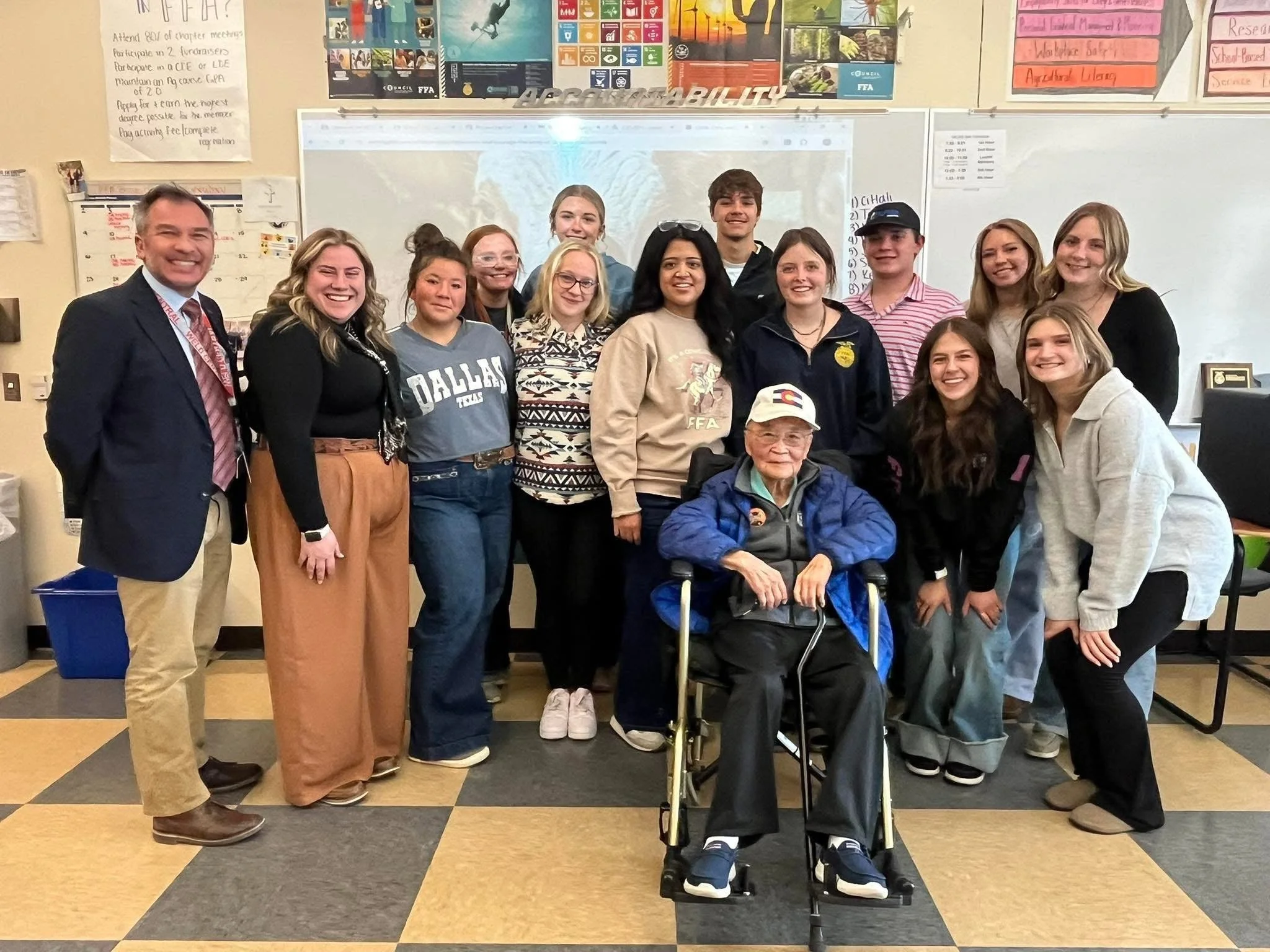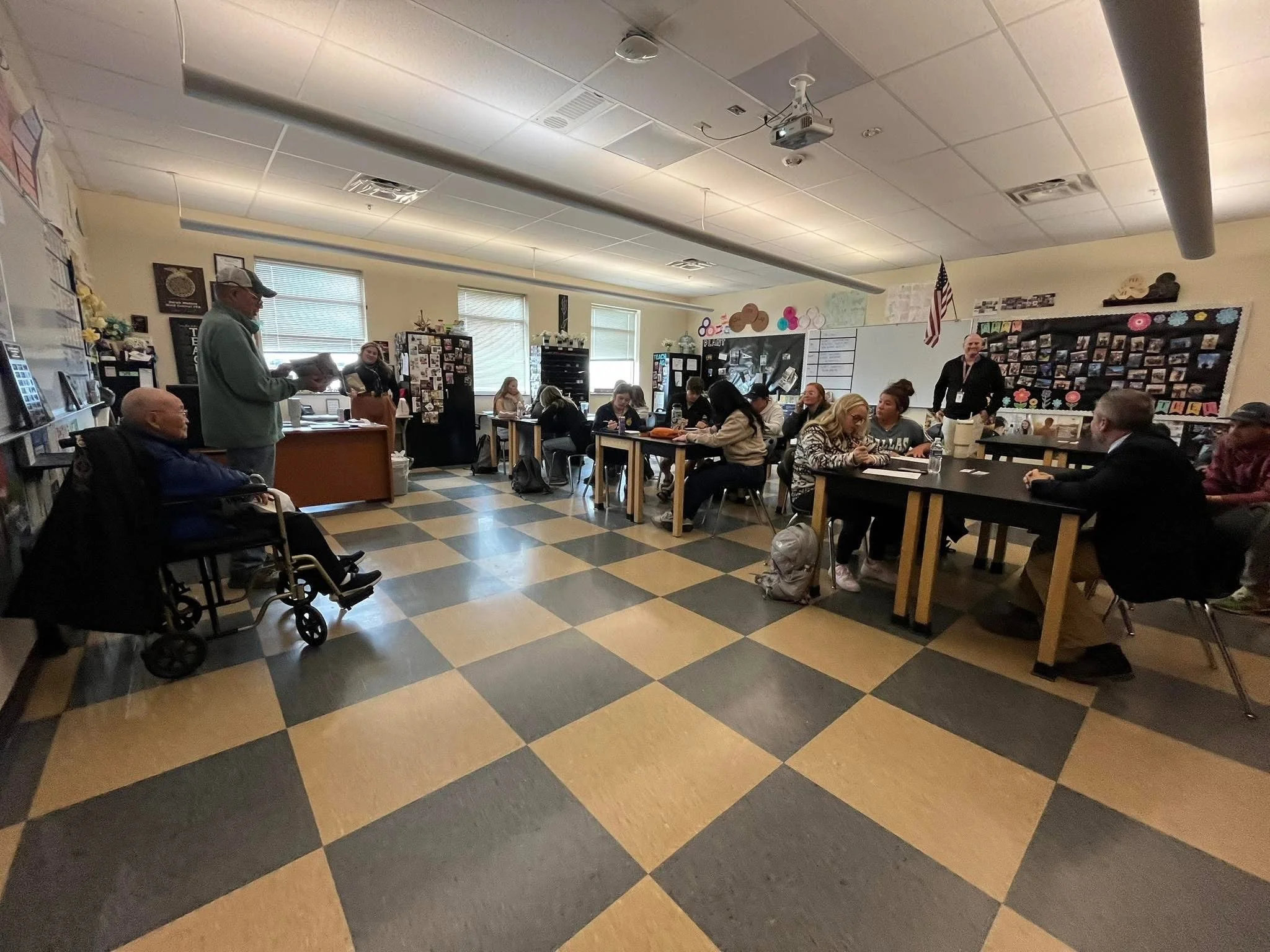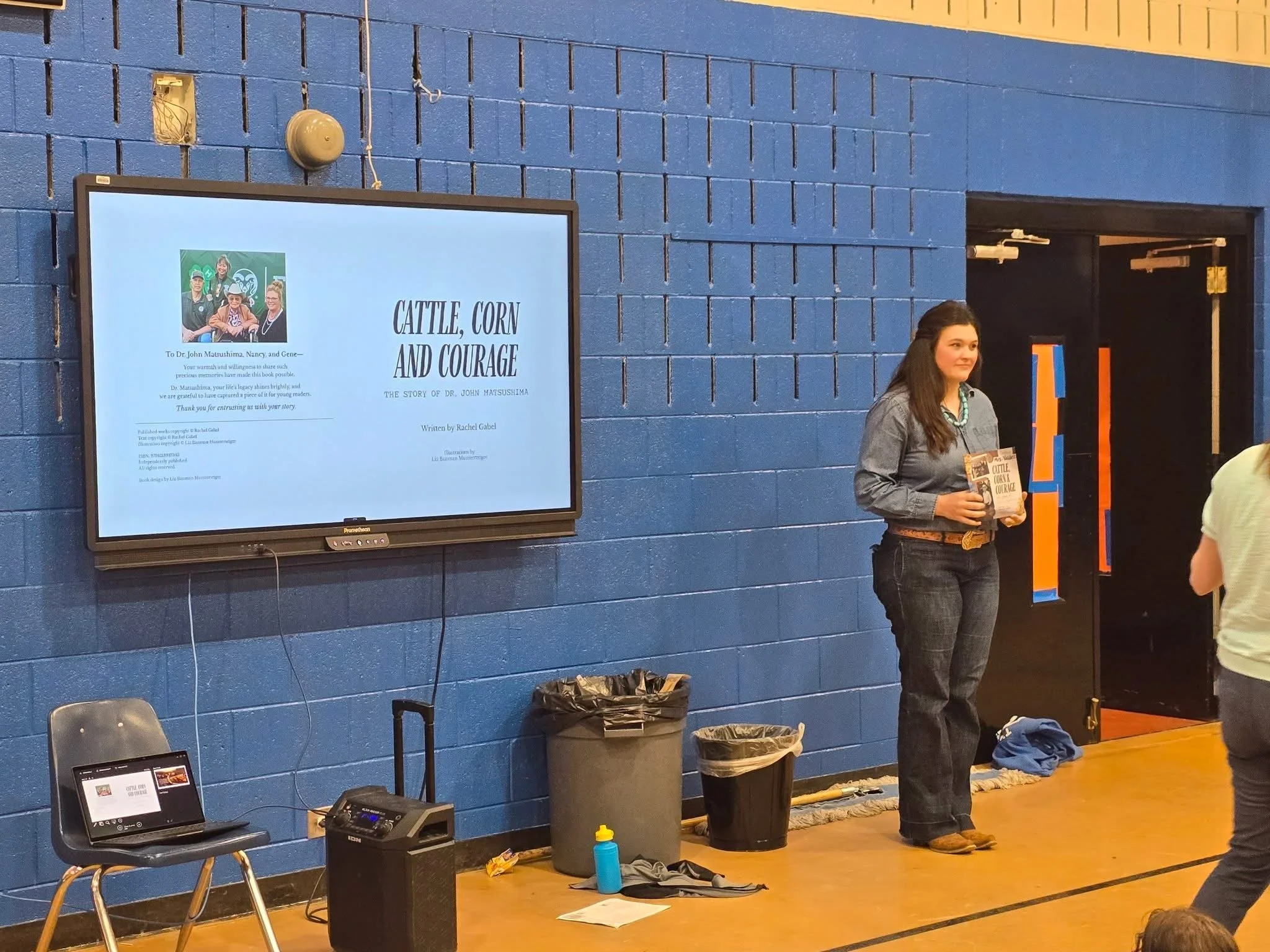
Bringing the story of Dr. John Matsushima to life through illustration
A children’s book project honoring Dr. John Matsushima bridging legacy, agriculture, and identity through intentional visual design and AI-assisted composite illustration.
Colorado Agriculture in the Classroom is a nonprofit educational organization that connects students with the people, systems, and stories behind modern agriculture. Through its annual Literacy Project, the organization distributes agriculture-themed children’s books—along with classroom kits and curriculum resources—to tens of thousands of students across Colorado and beyond. Each book highlights a true Colorado-based agricultural story, connecting to academic standards for language arts, social studies, STEM, and AFNR.
This year’s book was written by Rachel Gabel, a longtime collaborator and agricultural journalist with deep roots in Colorado’s rural storytelling. Cattle, Corn, and Courage marks our fourth book together, each one grounded in our shared goal of honoring real people through clarity, emotional connection, and meaningful storytelling.
✳ THE CHALLENGE

Illustrate a real, historically grounded story in a way that resonates with today’s students
For the 2025 Colorado Literacy Project, author Rachel Gabel and Colorado Agriculture in the Classroom needed illustrations for a book that could do more than inform, it had to connect. The goal was to reach thousands of students across grade levels with a story rooted in Colorado history, agricultural science, and personal resilience.
Key objectives included:
Share Dr. John Matsushima’s 100+ year legacy in a way that felt personal and accessible
Design visual materials that aligned with ELA, STEM, Social Studies, and AFNR standards
Introduce agriculture through a lens of innovation, diversity, and impact
Make the final product scalable for classroom distribution—visually and logistically
✳ THE SOLUTION
Making history feel personal
Dr. John Matsushima was born in Denver to Japanese immigrant parents and raised on a farm in Platteville, Colorado. As a young boy, he joined 4-H and FFA and began raising cattle, a passion that would evolve into a groundbreaking career in animal science.
Despite facing racism, financial hardship, and cultural barriers, Dr. Matsushima went on to become a globally respected researcher and professor at Colorado State University.
This story was powerful, but many of the available visuals were black-and-white historical photographs. For young students, those images can feel distant and unapproachable.
I wanted them to feel like they were right there with
Dr. Matsushima, walking through his world.
Photos courtesy of Matsushima family
Thoughtful use of AI assisted illustration & composite visuals in storytelling
To bring Dr. Matsushima’s world to life, I used AI-assisted illustration as a tool for visual storytelling to extend what was possible given the limited historical documentation.
Using MidJourney, I generated historically accurate imagery rooted in archival references: stockyards, clothing, classrooms, and farm life. Then, using Photoshop, I combined and retouched these elements by hand to create original illustrations that were immersive, cinematic, and emotionally grounded.
Every visual was carefully constructed—down to period-accurate silverware and clothing cuts—to give students a sense of connection to the time and place.
AI wasn’t used to replace illustration.
It was about presence, emotion, and honoring the subject with care.
Visualize under-documented time periods
Reconstruct moments that couldn’t be photographed
Honor a legacy by making it visually real to young readers
I see this approach as a bridge between technology and storytelling—a way to make stories like Dr. Matsushima’s not only accessible, but felt by the students who read them.
✳ THE OUTCOME
Connecting students to agriculture, identity, and innovation
Cattle, Corn, and Courage is now in the hands of 47,000+ students and educators across the country as part of the 2025 Literacy Project.
The book has helped bring Dr. Matsushima’s story to classrooms, showing students that agriculture is innovation, and that people from all backgrounds have shaped the world they live in today.
Each classroom kit includes:
A printed copy of the book
Educational resources and curriculum-aligned materials
Interactive learning activities
A beef stick for a hands-on nutritional tasting experience
BOOK DOWNLOAD
See how history, storytelling, and illustration came together.
Media Coverage & Recognition
The book and its impact were featured across multiple Colorado media outlets:
As seen on 9NEWS: Colorado & Company
Colorado Agriculture in the Classroom
Aired December 12, 2024 · 9NEWS (KUSA)
Featured in YourHub, a community news section of The Denver Post (print and e-edition)
Written by Grace Markley
Published November 22, 2024
BEHIND THE BOOK
From design to delivery
A closer look at how the story came to life, on the page and beyond…
In the classroom
Photos courtesy of Mesa View Elementary / Photographer Renee Briscoe, Minnequa Elementary, Westgate Community School / Photographer Mechelle Martz-Mayfield, and Nancy Matsushima Oliver









Volunteer prep and kit assembly
Photos courtesy of Colorado Farm Bureau Young Farmers & Ranchers
“At the 2025 Colorado Farm Bureau Young Farmers & Ranchers Conference, we did fantastic work with @coagclassroom and their annual Literacy Project, which aims to supply each participating class with a free kit containing educational resources and a hands-on activity for students from PreK through 12th grade.
In just five hours, we packed 567 kits representing 906 boxes and bags. These kits will reach 47,711 students and teachers around Colorado, some hand-delivered by YF&R members, helping to spread the story of Dr. John Matsushima and the history of agriculture in our state.”
Interview and research
Photos taken by me during Dr. Matsushima’s interview for the Colorado Ag in the Classroom video interview at CSU as well as a ranch tour at Gabel Farms.








Art and design that honors the past and invites students to imagine what’s next.
This project was about visualizing a historical figure as well as showing students that science is personal, that agriculture is innovation, and that their stories matter too. By combining storytelling, technology, and intentional design, I helped create a learning experience that’s both grounded in legacy and built for today’s classroom.























